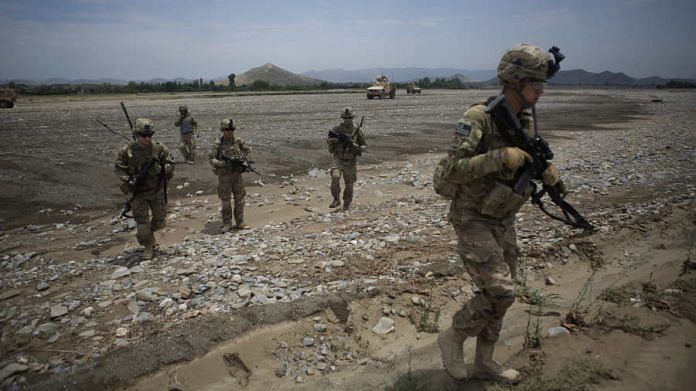New Delhi: The US-Taliban seal describes the Taliban peace deal as the ‘Islamic Emirate of Afghanistan’. The United States had previously fought the Taliban and called them an international and global terrorist group. Here are five questions that arise out of this deal:
What does it entail?
According to the tweets put out by Laurel Miller, a former US state department official for both Pakistan and Afghanistan, the deal presents nothing for the current Afghan regime led by Ashraf Ghani. She also says that for the people of Afghanistan, it means another chance at peace if the commitments by each stakeholder work.
For the Taliban, the deal is a victory because they will get a “firm schedule” of when the US forces will leave Afghanistan. Both the US and Afghan government, and the Taliban will release all prisoners they are currently holding by 12 March.
This deal had an “inclusive negotiating team” between the Taliban, Afghan government, and tribal groups. It says that whoever takes over must fight all terror forces. In other words, the US has now outsourced its fight to the people it was previously fighting. The deal also prohibits forces that threaten the US and its allies to form a base or sanctuary in Afghanistan.
UN sanctions will be lifted in three months, and US sanctions by 27 August. Full withdrawal of US troops will take place in 14 months, and its allied groups will withdraw subsequently.
Also read: US-Taliban peace talks won’t go far without India. Modi should explore Afghan opportunities
Why are critics comparing it to 1973 US-North Vietnam peace deal?
Some, like Trump’s former security adviser John Bolton, called it an ‘Obama-style deal’ where all the wrong messages are being sent to Al-Qaeda, ISIS, and other enemies of the US. He said it would bring “unacceptable risk to America’s civilian population”.
According to the 1973 Paris Peace Accords, when the Americans pulled back, they left the North and South Vietnamese to negotiate with each other on commitments from the dominant North Vietnamese, who said they would be fair. As soon as the US had withdrawn, however, the North began pushing into the South. Despite the commitments it made to the South in such an event, the US dumped its allies in the South, and Saigon ultimately fell to the North Vietnamese on 29-30 April 1975.
Americans then carried out Operation Frequent Wind, evacuating the last of its diplomatic and military personnel from the roof of its embassy.
Critics presume that once the US leaves Afghanistan, the Taliban will push against those who had formerly collaborated with the US.
There are counters to critics who oppose the deal. Jarrett Blanc, a former coordinator for Afghanistan and Pakistan in the state department, says it’s better to end fighting than to let it continue. Vietnam has risen to become a confident country, a friend of America, and has fared well economically.
Where does it leave Afghanistan?
While Vietnam’s Ho Chi Minh had a flexible ideology, and was schooled in the modern way, the Taliban remains conservative to the extent that it leaves even the Saudis worried. The chances of Afghanistan modernising under the Taliban are low.
Where does it lead the region (Pakistan, India, China)?
Pakistan will immediately be celebrating, because it brokered this deal. Pakistan both enabled the Americans to fight, and enabled the Taliban to survive. This deal means the US has been thwarted by Pakistan and the ISI, which has been playing both sides. For a larger sense of acceptance, the Taliban might become more nationalistic, which could cause trouble for Pakistan.
China will be happy because of its immense influence over the country. They already have control over Pakistan, and now Afghanistan will become the route for the flow of products from Central Asia to China.
For India, it’s a lose-lose situation since the government it had backed will go. That India will continue to hold its ground in northern Afghanistan may not work because now the Taliban will have the support of the Americans, unlike in the past. This makes India’s loss of influence decisive.
Also read: Trump will meet Taliban leaders but no one knows when or where
What does this mean for India?
It could be good for India to withdraw from fighting with Pakistan in Afghanistan. At the peak of their powers, all super-powers have tried to subdue Afghanistan — the British tried in the 19th century, the Soviets tried in the 20th century, and now the Americans in the 21st century — and all have failed. If Pakistan thinks it can do it, then India should let them. For more on India’s ties with Afghanistan, watch this episode 337 of CutTheClutter.
You can watch the full episode 403 of #CutTheClutter here.






